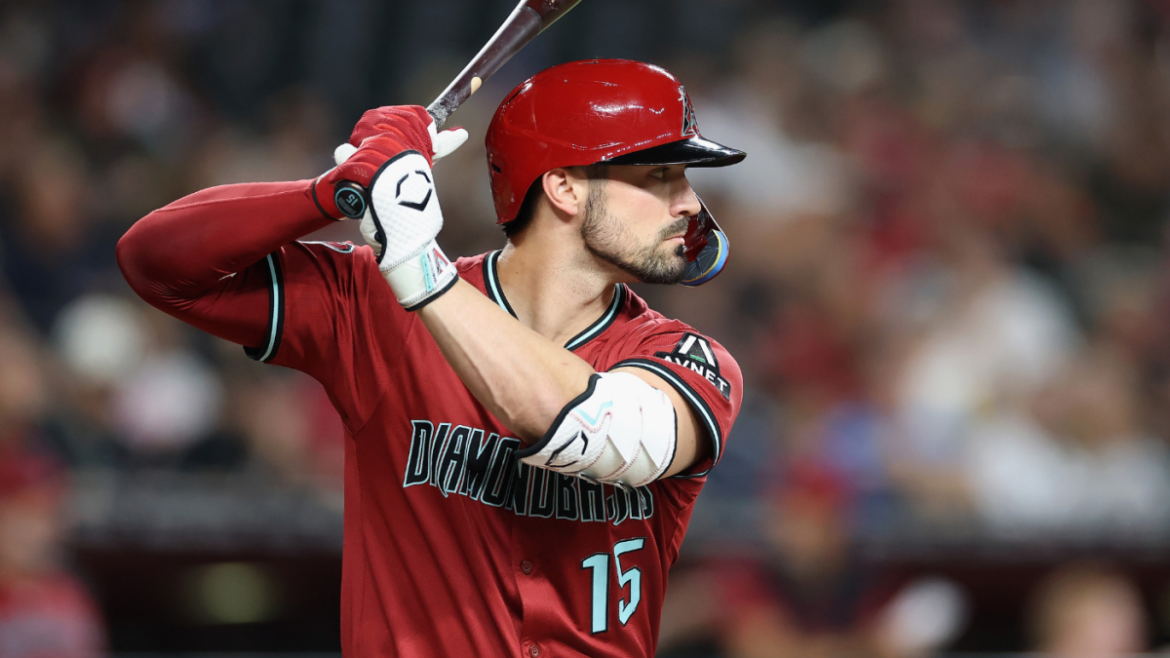The Arizona Diamondbacks’ Trade Deadline Strategy: A Calculated Approach to Future Success
Introduction: A Crossroads for the Diamondbacks
The Arizona Diamondbacks stand at a pivotal moment in their franchise history. As the MLB trade deadline approaches, the team faces a critical decision: whether to sell off assets to rebuild or hold onto key players to remain competitive. Recent moves, such as the trade of outfielder Randal Grichuk, suggest a willingness to part with veterans, but the Diamondbacks’ strategy is far from a simple fire sale. Instead, they appear to be adopting a calculated approach, prioritizing long-term success over short-term gains.
The “Sell-Off” Narrative: A Nuanced Reality
The media has been quick to label the Diamondbacks as sellers, citing the Grichuk trade as evidence. While it is true that the team is open to moving players, the narrative of a wholesale teardown is an oversimplification. The Diamondbacks are not merely giving away valuable pieces for pennies on the dollar. Instead, they are strategically evaluating their roster, identifying players who no longer fit into their long-term plans, and seeking to maximize the return on those assets.
This approach is not without precedent. Teams like the Tampa Bay Rays and Oakland Athletics have successfully navigated similar situations, trading veterans for prospects and rebuilding their rosters. The Diamondbacks appear to be following a similar path, albeit with their own unique twists and considerations.
Key Players in the Trade Conversation
The Diamondbacks have several players who could be moved at the trade deadline. These players can be divided into two categories: veterans on expiring contracts and players with longer-term control who could fetch a significant return.
Veterans on Expiring Contracts
Players with Longer-Term Control
Potential Trade Destinations and Scenarios
Predicting trade destinations is always speculative, but analyzing team needs and prospect inventory can offer clues. Here are some potential scenarios for the Diamondbacks’ key trade chips:
Eugenio Suárez
Several teams could be in the market for a third baseman with power. Contenders like the Los Angeles Dodgers, New York Yankees, and Houston Astros could be willing to part with top prospects to acquire Suárez. A potential trade package could include a combination of MLB-ready prospects and high-upside youngsters. For example, the Dodgers might be willing to part with a top-10 prospect like Andy Pages or a pitching prospect like Bobby Miller.
Merrill Kelly
Teams seeking starting pitching depth are always plentiful. The Chicago Cubs and Toronto Blue Jays, both in playoff contention, might view Kelly as a valuable addition to their rotations. The Diamondbacks would likely target pitching prospects or young, controllable position players in return. For instance, the Cubs might be willing to part with a prospect like Brennen Davis or a pitching prospect like Jordan Wicks.
Zac Gallen
While it is less likely that Gallen will be traded, the Diamondbacks could potentially receive a king’s ransom for him. Teams like the Los Angeles Dodgers, New York Yankees, and Houston Astros would all be interested in acquiring a young, controllable starting pitcher with ace potential. A potential trade package could include a combination of top prospects and MLB-ready players. For example, the Dodgers might be willing to part with a package that includes Andy Pages, Bobby Miller, and a major league-ready player like Miguel Vargas.
The Impact of “Bad Luck” and External Factors
One report mentions the Diamondbacks’ “bad luck” as a factor influencing their trade deadline decisions. While it’s difficult to quantify “luck,” injuries, underperformance from key players, and unexpected slumps can undoubtedly impact a team’s trajectory. These factors might force the Diamondbacks to adjust their expectations and be more willing to sell off assets than they initially planned.
Another external factor is the overall market for players. The demand for specific positions, the availability of comparable players, and the willingness of other teams to pay a premium will all influence the Diamondbacks’ ability to extract maximum value in trades. For example, if there is a surplus of starting pitching on the market, the Diamondbacks might struggle to get a high return for Merrill Kelly. Conversely, if there is a shortage of power-hitting third basemen, they could potentially get a significant return for Eugenio Suárez.
Beyond the Deadline: Rebuilding and Re-tooling
The Diamondbacks’ trade deadline decisions will have a significant impact on their future. A successful sell-off could net them a haul of promising prospects, accelerating their rebuilding process. However, trading away too much talent could leave the team depleted and struggling to compete in the short term.
The key will be striking a balance between acquiring future assets and maintaining a competitive roster. The Diamondbacks need to identify players who can contribute to their long-term success while also maximizing the value of those who don’t fit into their plans. This might involve trading veterans for prospects and using the savings from those trades to sign free agents or extend contracts for key players.
Conclusion: A Calculated Gamble with High Stakes
The Arizona Diamondbacks’ approach to the trade deadline is a calculated gamble, one that could define the franchise’s trajectory for years to come. By strategically evaluating their assets, identifying players who can bring the most value in return, and carefully considering the long-term implications of their decisions, the Diamondbacks are positioning themselves for future success.
While trading away veterans like Grichuk, Suárez, and Kelly might sting in the short term, it could ultimately pave the way for a brighter future. The success of their strategy will depend on their ability to identify and acquire the right prospects, develop those players effectively, and build a sustainable winning culture. If executed correctly, the Diamondbacks could emerge from this trade deadline as a stronger, more competitive team, poised to contend in the years to come. If not, they risk falling into a cycle of mediocrity, struggling to regain their footing in a highly competitive National League West division. The stakes are high, and the Diamondbacks’ decisions in the coming weeks will be crucial in determining their future.





